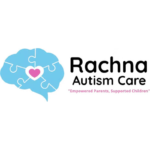All kids grow at their own pace, and learn at their own pace. They would differ such that in some cases they learn how to speak wherein some might learn early and have a lot to say while others talk much later in life, some are naturally quiet while others never seem to stop chatting. All of this is perfectly normal. There are still some autism behavior red-flag signs that all parents and caregivers ought to be aware of-symptoms or behaviors that can easily be identified and show a need for professional evaluation.
Catching these signs early does not put a label on your child but opens doors for early support and intervention.
Why Early Detection Is Important
In essence, Autism Spectrum Disorder (ASD) is characterized by neurodevelopmental conditions in children, affecting how they communicate and interact with each other and how they perceive their worlds. Once recognized early, children will have that much quicker access to tools and therapies that are necessary to thrive in the world.
You would see that your child’s having difficulty in class seeing the board; you wouldn’t wait for expansion to come before checking her vision. In the same way, early detection of possible autism-behavior red flags will help avail future issues in school, relationship, and general daily living.
Common Autism Behaviour Red Flags per Age Group
Infants and Toddlers 0-3 years
- Little eye contact or not responding to a familiar voice.
- Not smiling back when someone smiles at them.
- Delayed speech or no babbling by 12 months.
- Not pointing, waving, or showing objects to share interest.
- Appearing “in their own world” most of the time.
Pre-Schoolers 3-5 years
- No interest/participation in other children or group play.
- Repetitive movements by rocking or hand-flapping, spinning.
- Fixation on certain objects or subjects and resistance to change of schedule or routine.
- Having problems following very simple directives.
- Spoken in an unusual intonation or rhythm or repeated phrases.
School-Age Children (5 years old and beyond)
- Difficulty understanding social cues such as facial expressions and sarcasm.
- Disturbance with even the slightest changes in routine or environment.
- Talks mostly about an intense, specific interest.
- Sensitive to some sounds, covering ears, avoiding texture, or craving really strong sensations.
- Difficult to flexible thinking or failure in problem-solving of situations in daily life.
Quirky Behavior versus Red Flag
Each child has that quirk. Just as one loves spinning in circles, or lining up his toys might not be grounds for concern. It is how frequent, intense and impacts everyday life.
For example, a child may sometimes line up their cars but actually engages in imaginary play with others use of social interaction and seem only to prefer this type of play; likelihood is that this child has just a preference. When a child constructs a toy line for hours, gets severely distressed whenever the order changes, and generally shows no interest in social interaction, they may show autism behavior red flags.
What Causes These Behavior Differences?
There is no one cause of autism. Research indicates that genetics and environmental factors together play a role in normal brain development, which is how children process their sensory information, communicate, and develop in social contexts.
Importantly, autism is not a result of bad parenting and a loving mother. Instead, it represents another way of perceiving the outside world-the challenges along with its privileges.
When to Seek Professional Help
If you see multiple red flags for autism and particularly in different settings (home, school, playground), it would be wise to seek a professional opinion.
To start, one will approach his/her pediatrician who can then refer to specialists such as:
- Developmental pediatricians.
- Child psychologists.
- Speech-language therapists.
- Occupational therapists.
Early intervention programs could be an avenue to support communication, social skills, sensory processing, and emotional regulation. The earlier the start to these supports, the better the future outcomes for children.
How Parents Can Help Their Child at Home
Even before an official diagnosis, there are things you can do to help your child thrive.
Observation and Documentation are essential. Maintain a behavior journal-tracking incidents, what may set off, and what helps.
Establish Predictable Routines-. Most children with autism may feel much better if they know what to expect.
Using Visual Supports .- Picture schedules, social stories, and other visual cues can help make instructions clearer.
Encouraging Play and Interaction-start with activities your child enjoys and slowly challenge them to expand play skills.
Be Patient and Positive-minor victories and progress enjoyed no matter how slow it feels.
Breaking the Stigma
Having a diagnosis of your child as having autism can be too much for some. The fear of labeling or judgment attached to this is what keeps many parents from proceeding in getting an assessment done. Remember, however, that a diagnosis is not a sentence; it is a map. It gives a clearer understanding of the child’s needs and strengths, directing one to the resources that can be of help.
Replacing fear with understanding enables our children to strive toward their maximum potential.
Final Thoughts
However, not every delay or strange behavior indicates that a child has autism. But if you see the red flags related to autism persistently, trust your instincts and get the guidance you need. You’re not being overprotective; you’re being proactive.
Like all other children, kids with autism also can have satisfying, happy lives full of significant links and achievements. That’s the first step-in half unlocking their future.

